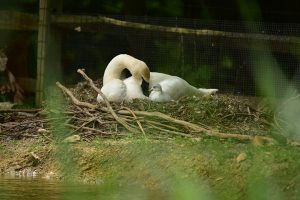
BALTIMORE, MD – Happy hatchday to a new trumpeter swan at The Maryland Zoo! The hatchling, called a cygnet, hatched after more than 30 days of incubating.
“This is our fourth clutch laid by the trumpeter swan pair here at the Zoo,” said Jen Kottyan, avian collection and conservation manager. “We’re thrilled to be able to share this exciting event with Zoo visitors, to watch the cygnet grow, and to be part of conservation efforts for the species through an annual release program in Iowa that boosts the wild population.”
Trumpeter swans are the largest waterfowl species native to North America and the largest swan in the world. They can weigh up to 30 pounds, and are known for their bright white feathers, black beaks, very large webbed feet and a six-foot wingspan. In the early 1900s, trumpeter swans were nearly hunted to extinction for their skin, feathers, meat and eggs. The passage of the Migratory Bird Treaty Act of 1918 gave protection to trumpeter swans and other birds which helped curb illegal killing, however the population continued to decline and in 1932 it was believed that there were fewer than 70 trumpeter swans remaining. In 1935, the U.S. government established Red Rock Lakes National Wildlife Refuge (NWR) in Montana’s Centennial Valley to protect the remaining trumpeters.
Earlier this month, one swan from last year’s clutch was released at a lake in southern Iowa, as part of a conservation program with the Iowa Department of Natural Resources (IDNR). This year’s cygnet will be sent to Iowa in the fall in preparation for release to the wild next May.
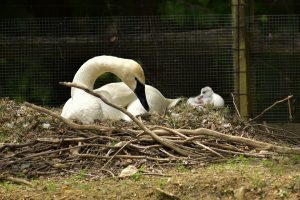
“Thanks to conservation work around the United States, such as trumpeter swan restoration programs, the swan population has reached over 60,000 individuals,” said Kottyan. “We are very proud to be a part of the effort to bolster the population of this amazing bird so future generations can be inspired by their beauty.” Trumpeter swans disappeared from Iowa by the late 1880s. For the last two decades, the IDNR has worked to reestablish trumpeter swan populations in the state.
The Zoo’s trumpeter swans and cygnet are viewable at the pond in the Maryland Wilderness Farmyard. Their nest is across the pond from the dock, however the swans use the entire area during the day as they swim on the pond and forage for small insects and aquatic vegetation.

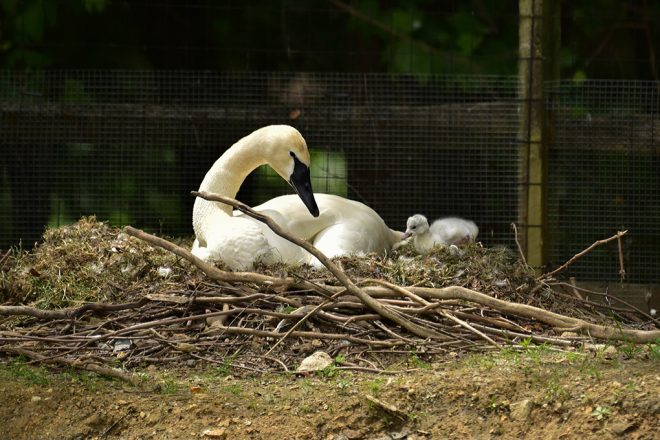
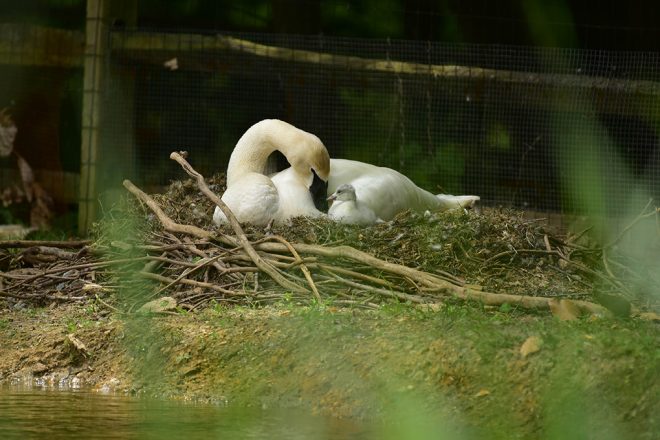
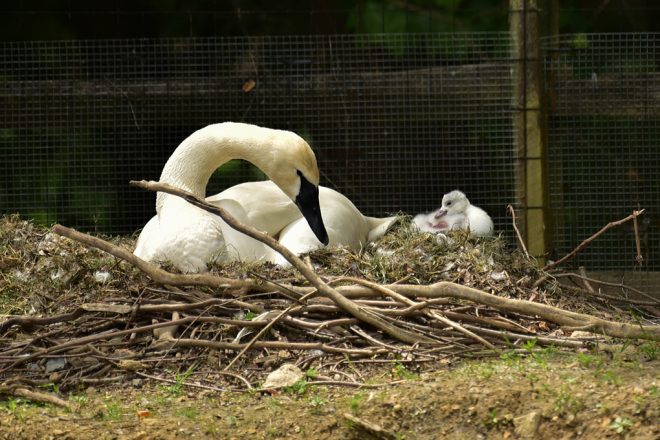



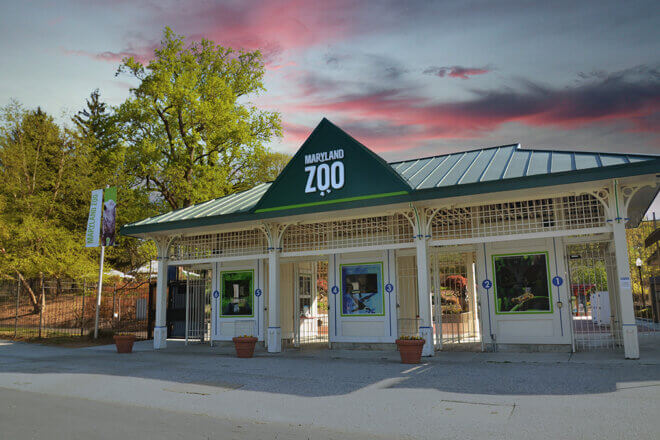
Share this article